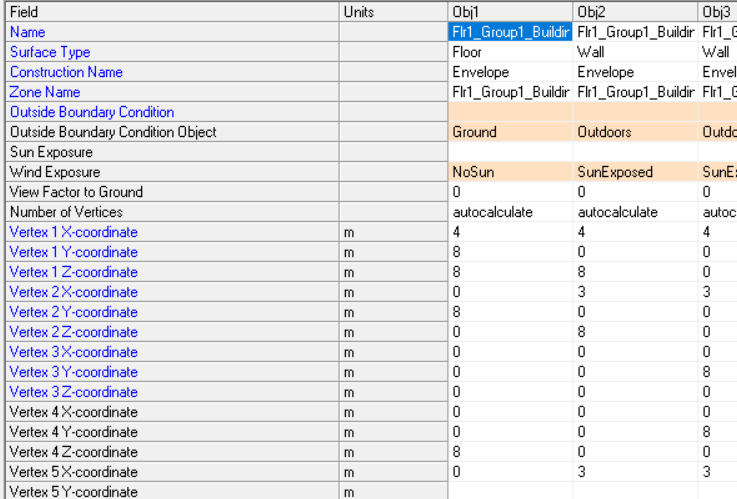Dear @chris and everyone,
I am having trouble translating my HBModels to idf. I have several custom scripts to create energy models. At the end, I export the model into idf with the following lines of code by importing model_to_idf from honeybee energy:
# create model
finalModel = Model(filesNames[n], rooms = newRooms, tolerance = tolerance)
# convert honeybee to idf string
idfModel = model_to_idf(finalModel)
# write idf file
file = finalModel.identifier +".idf"
filePath = open(path + "/" + file, "w")
for line in idfModel:
filePath.write(line)
filePath.close()
This script has always worked so far. However, since I update from Ladybug Tools 1.3.0 to 1.4.0 the idf is generated with the following error in the BuildingSurface:Detailed:
It looks like everything is shifted by one row. I am using EnergyPlus 9.4.0, but I have seen that in version 9.6.0 (which is the one used by OpenStudio3.3.0) there is a new row called “Space Name” between “Zone Name” and “Outside Buondary Condition”:

I need to compare these results with others I have obtained with EnergyPlus 9.4.0 so I don’t think it is feasible to update everything to the latest version of EnergyPlus.
To make it faster I am running this code outside of Grasshopper directly in Python, so I installed all packages using pip. Therefore, I am not sure if I can just go back to Ladybug Tools 1.3.0. I tried to look on github which are the versions of honeybee I should install by using pip to got back to the previous version but I couldn’t find that information.
I was wondering if going back to the previous version is the only way to avoid this problem since it is related to EnergyPlus or if there is another solution.
Thanks for your help.
Federico
